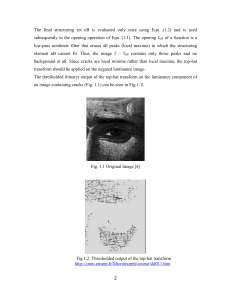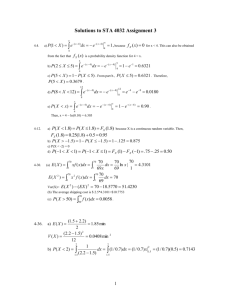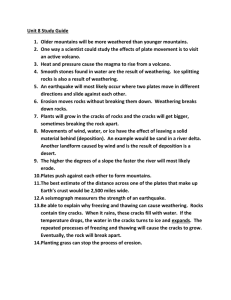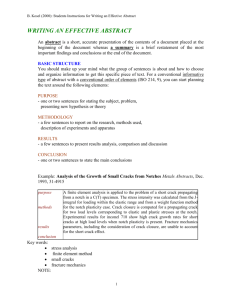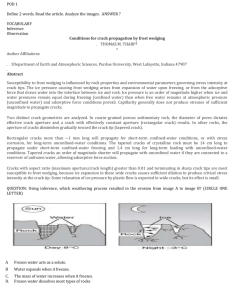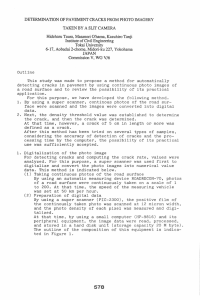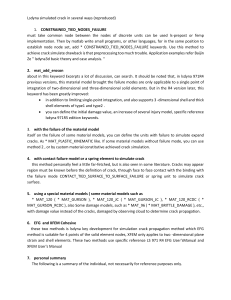crack_detection
advertisement
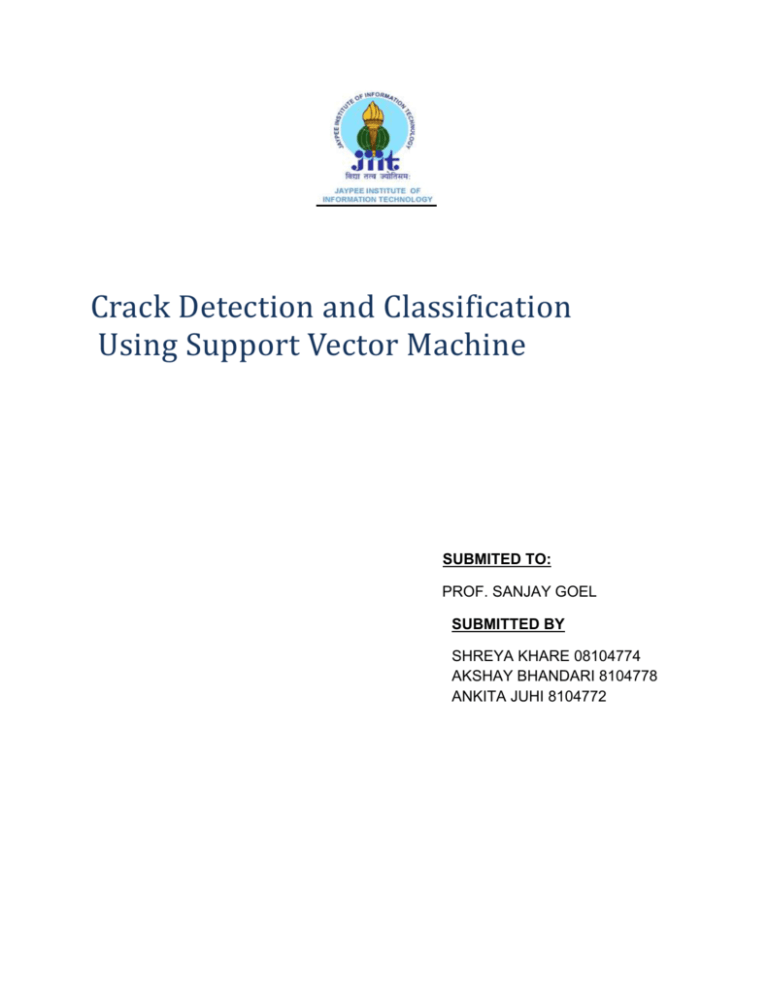
Crack Detection and Classification Using Support Vector Machine SUBMITED TO: PROF. SANJAY GOEL SUBMITTED BY SHREYA KHARE 08104774 AKSHAY BHANDARI 8104778 ANKITA JUHI 8104772 Abstract Driven by the diffusion of multimedia systems and by the availability of increasingly effective digital imaging tools, image-processing techniques have been successfully applied to the analysis, restoration, archiving and preservation of artwork. Many paintings, especially old ones, suffer from breaks in the substrate, the paint, or the varnish. These patterns are usually called cracks or craquelure and can be caused by aging, drying, and mechanical factors. Age cracks can result from non-uniform contraction in the canvas or wood-panel support of the painting, which stresses the layers of the painting. Drying cracks are usually caused by the evaporation of volatile paint components and the consequent shrinkage of the paint. Finally, mechanical cracks result from painting deformations due to external causes, e.g. vibrations and impacts. The appearance of cracks on paintings deteriorates the perceived image quality. However, one can use digital image processing techniques to detect and eliminate the cracks on digitized paintings. An integrated methodology for the detection and removal of cracks on images of monuments and sculptures is being developed. The cracks are detected followed by the removal of dark brush strokes which have been misidentified as cracks. Finally, crack filling using filters are performed. AIM: To semi automate the process of crack detection and classification , along with filling the cracks in the digital images of monuments and paintings. This process will restore the destruction caused to cultural heritage. MODULES OF THE PROJECT 1. Crack detection Cracks usually have low luminance and thus can be considered as local intensity minima with rather elongated structural characteristics. Therefore, a crack detector can be applied on the luminance component of an image and should be able to identify such minima. A crack detection procedure based on the so-called top-hat transform. In situations where the crack-like artifacts are of high luminance, as in the case of scratches on photographs, negation of the luminance component prior to the crack detection is not required, i.e. the crack detection procedure can be applied directly on the luminance image. The user can control the result of the crack detection procedure by choosing appropriate values for the following parameters: The type of the structuring element B. The size of the structuring element B and the number n of dilations The top-hat transform generates a grayscale output image where pixels with a large grey value are potential crack or crack-like elements. Therefore, a thresholding operation on is required to separate cracks from the rest of the image. The threshold can be chosen by a trial and error procedure, i.e., by inspecting its effect on the resulting crack map. 2. Crack classification In some paintings, certain areas exist where brush strokes have almost the same thickness and luminance features as cracks. The hair of a person in a portrait could be such an area. Therefore, the top-hat transform might misclassify these dark brush strokes as cracks. Thus, in order to avoid any undesirable alterations to the original image, it is very important to separate these brush strokes from the actual cracks, before the implementation of the crack filling procedure. From the statistical analysis , it has been concluded that the classification can be based on the following criterion based on the ‘Hue’ & ‘Saturation’ of the image: H value : 00S value : 0.30.0This information is used to prepare the training set. The undecided pixels are classified using Support Vector Machine. SVM is a global classification model that generates nonoverlapping partitions and usually employs all attributes. A support vector machine constructs a hyper plane or set of hyper planes in a high- or infinite-dimensional space, which can be used for classification. A good separation is achieved by the hyper plane that has the largest distance to the nearest training data point of any class, since in general the larger the margin the lower the generalization error of the classifier. 3. Crack restoration The cracks identified by the application as well as chosen by the end user via the semi automatic interface of the application were removed by the following ways: Gaussian Filter Gaussian filtering is done by convolving each point in the input array with a Gaussian kernel and then summing them all to produce the output array The module convolves the source image with the specified Gaussian kernel. Median Filter The median filter run through each element of the signal (in this case the image) and replaces each pixel with the median of its neighboring pixels (located in a square neighborhood around the evaluated pixel). The module smoothes an image using the median filter with a particular size of aperture. Each channel of a multi-channel image is processed independently. Inpainting Inpainting is the process of reconstructing lost or deteriorated parts of images .The algorithm behind it is anisotropic diffusion. The function reconstructs the selected image area from the pixel near the area boundary. The space-variant filter is in fact isotropic but depends on the image content such that it approximates an impulse function close to edges and other structures that should be preserved in the image over the different levels of the resulting scale-space. Anisotropic diffusion is normally implemented by means of an approximation of the generalized diffusion equation: each new image in the family is computed by applying this equation to the previous image

